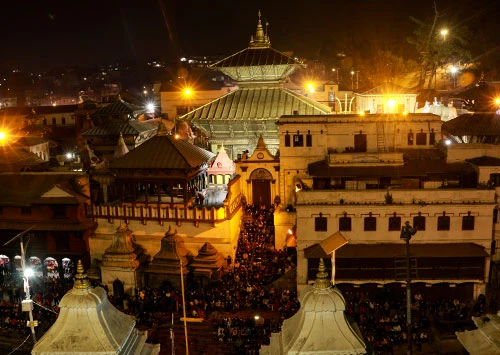Tour Highlights - Kathmandu Valley Sightseeing Tour
Kathmandu Durbar Square – Historic royal palace, temples, and the Living Goddess Kumari.
Swayambhunath (Monkey Temple) – Ancient stupa with panoramic views of the valley.
Boudhanath Stupa – One of the largest stupas in the world; center of Tibetan Buddhism.
Pashupatinath Temple – Sacred Hindu temple complex on the banks of the Bagmati River.
Patan Durbar Square – Rich in Newari architecture, art, and ancient temples.
Bhaktapur Durbar Square – Preserved medieval city with pagodas, pottery, and culture.
Changu Narayan Temple – Oldest Hindu temple in the valley, a UNESCO World Heritage Site.
Kathmandu Valley Sightseeing Tour overview!
Kathmandu Valley Sightseeing Tour showcases captivating temples, scenic viewpoints, and charming Newari villages. However, many visitors hastily bypass these treasures in their eagerness to reach Chitwan, Pokhara, Everest, and other destinations. Therefore, savvy tourists make the most of their holidays by exploring the hidden gems within the valley. While the population has rapidly grown to 3 million, the valley has undergone changes, yet elements of traditional life persist. Rural life aligns with the rhythms of seasons, vibrant festivals, and the timeless priorities of fields, family, and devotion to the gods. Noteworthy rock climbing spots, such as Nagarjuna and Sivapuri hills, are conveniently accessible from Kathmandu.
Kathmandu Valley stands as a cultural melting pot, comprising the cities of Lalitpur, Kathmandu, and Bhaktapur. Inhabited by Newari ethnic groups, these cities uphold ancient customs of Hindu, Buddhist, and Kirati religious practices, contributing to the colorful tapestry of Nepalese life. Festivals bring joy to the locals' lives, and major historic, cultural, and religious sites, such as Kathmandu, Patan, and Bhaktapur, are essential stops for sightseeing. Nagarkot, located 32 km east of Kathmandu, is a popular tourist spot renowned for its panoramic views of the eastern Nepal Himalayas, including the majestic Mt. Everest. The Kathmandu Durbar Square, recognized as a UNESCO World Heritage site, is rich in history and cultural significance, encompassing temples, palaces, and festivals.
Swayambhunath, often called the Monkey Temple due to the holy monkeys living in the area, sits atop a hill overlooking Kathmandu Valley. The main stupa features a white dome and a gilded spire painted with the all-seeing eyes of Buddha. Surrounded by shrines, statues, and prayer wheels, it offers panoramic views and spiritual ambiance. Swayambhunath is one of the oldest and most sacred Buddhist sites in Nepal. It is revered by both Buddhists and Hindus and symbolizes peace, enlightenment, and harmony. The temple is also a UNESCO World Heritage Site.
The Pashupatinath Temple, situated on the banks of the Bagmati River in Kathmandu, Nepal, is one of the most sacred Hindu temples dedicated to Lord Shiva. Recognized as a UNESCO World Heritage Site, it serves as a major pilgrimage destination, particularly during the Maha Shivaratri festival. Built in the traditional pagoda style, the temple features a gilded roof and silver-plated doors. At its heart is a sacred stone lingam bearing four faces of Lord Shiva. The expansive temple complex includes numerous shrines, ashrams, and ghats, which are especially significant for cremation rites. Revered as the holiest Shiva temple in Nepal, Pashupatinath stands as a powerful symbol of the spiritual and cultural heritage of the Kathmandu Valley, drawing thousands of devotees and sadhus every year.
Other places of interest include Kirtipur, a small historic town with shrines and traditional looms, and Chobhar, known for its gorge and the legend of Manjushree cutting it to drain the Kathmandu Valley. Dakshinkali Temple attracts pilgrims and picnickers, while Nagarkot, 32 kilometers east of Kathmandu, offers breathtaking views of the Himalayan peaks. The panoramic spectacle includes Mt. Everest, Manaslu, Ganesh Himal, Langtang, and Gaurishanker, making Nagarkot a favored destination.





